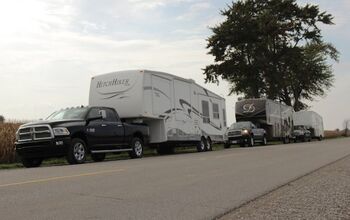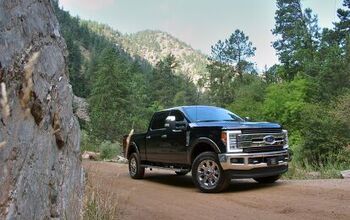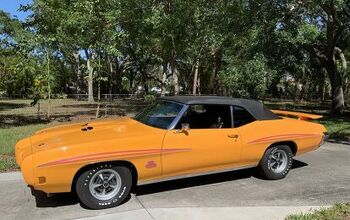How To Back Up A Trailer
Backing up a trailer is one of the most challenging skills for new and experienced drivers alike.
Even for capable trucks like the 2025 Toyota Tundra, the task requires practice, planning, and patience. Whether you're towing a car, a camper, or utility equipment, understanding the mechanics of reversing a trailer can save time, avoid damage, and improve safety.
Here's how to do it right.
Use a Spotter or Backup Camera
Whenever possible, enlist the help of a spotter. Trailers—especially enclosed ones—create large blind spots, making it difficult to judge distance or alignment. For solo drivers, the 2025 Toyota Tundra offers an integrated Wi-Fi trailer camera. The feed can be displayed on either the digital rearview mirror or the central infotainment screen, allowing for clear visual tracking of the trailer as it moves.
Tilt Mirrors to See the Trailer Tires
Tilting the side mirrors downward provides a better view of the trailer’s tires and their position relative to lines, curbs, or obstacles. This small adjustment makes it easier to identify drift early and respond before the trailer misaligns.
Understand Trailer Steering Dynamics
One of the biggest hurdles for new trailer drivers is adapting to reversed steering inputs. When the steering wheel is turned left, the trailer moves right, and vice versa. A useful tip is to steer from the bottom of the wheel. In this orientation, moving your hand left moves the trailer left, and moving right moves the trailer right—simplifying directional control. The Tundra also includes backup guide overlays that show anticipated trailer movement based on current steering angle.
Make Small, Slow Adjustments
Smaller trailers respond quickly to input, which can lead to overcorrection. To avoid this, drivers should reverse slowly and make incremental adjustments. When backing up in a straight line, the Tundra’s Straight Path Assist can help. Once the trailer is registered in the truck’s settings, the system allows the truck to automatically adjust the steering to maintain a straight reverse path.
Visualize the Process as “Pushing” the Trailer
Mentally reframing the process helps. Instead of thinking of the truck and trailer as a single unit, picture the truck pushing the trailer from behind—like guiding a wheelbarrow. This perspective makes it easier to grasp how the trailer will respond to different steering movements.
Use Mirrors and Visual Landmarks
Constantly checking both mirrors is crucial. Watching for alignment drift, encroaching obstacles, or changes in trailer angle keeps the process safe and on track. Choosing stationary objects like cones, fence lines, or pavement markings as visual reference points can help guide the trailer more accurately into its intended position.
Avoid Jackknifing
If a trailer turns too sharply while reversing, it can jackknife—coming dangerously close to contacting the rear of the towing vehicle. To prevent this, drivers need to recognize the point where correction is no longer possible. At that point, the vehicle should be moved forward to straighten the trailer before trying again.
Practice Makes Perfect
Backing up a trailer isn’t something most drivers master overnight. It takes repetition, a calm pace, and the right tools. The Tundra’s backup systems, camera aids, and steering assist features are designed to support both new and seasoned drivers, but like anything else, experience remains the best teacher.
Whether you're backing into a driveway or lining up in a paddock at Willow Springs, mastering trailer reversing ensures a safer, more confident towing experience—one that gets you to your destination without incident.
Become an AutoGuide insider. Get the latest from the automotive world first by subscribing to our newsletter here.
More by AutoGuide.com Staff



































Comments
Join the conversation